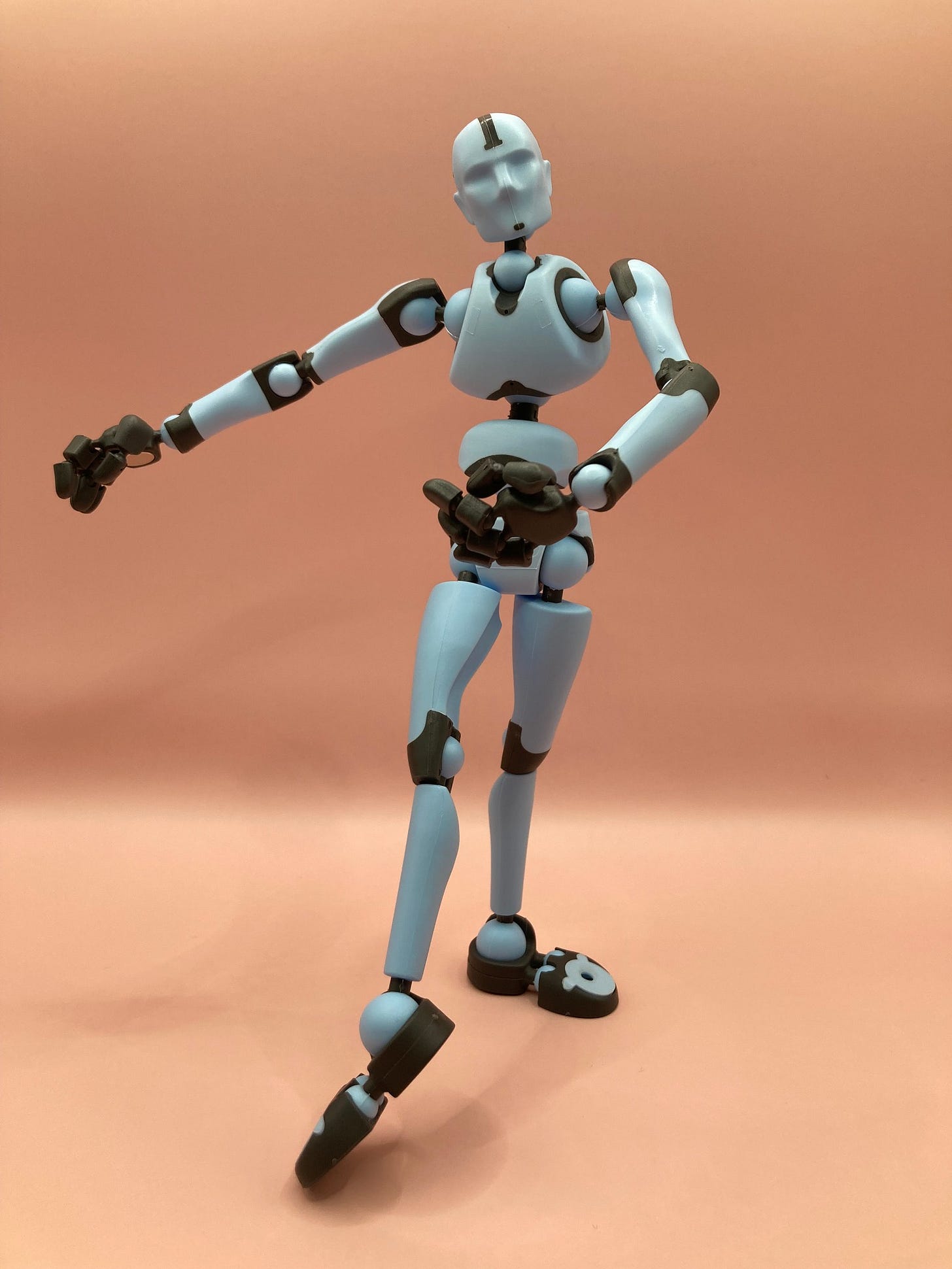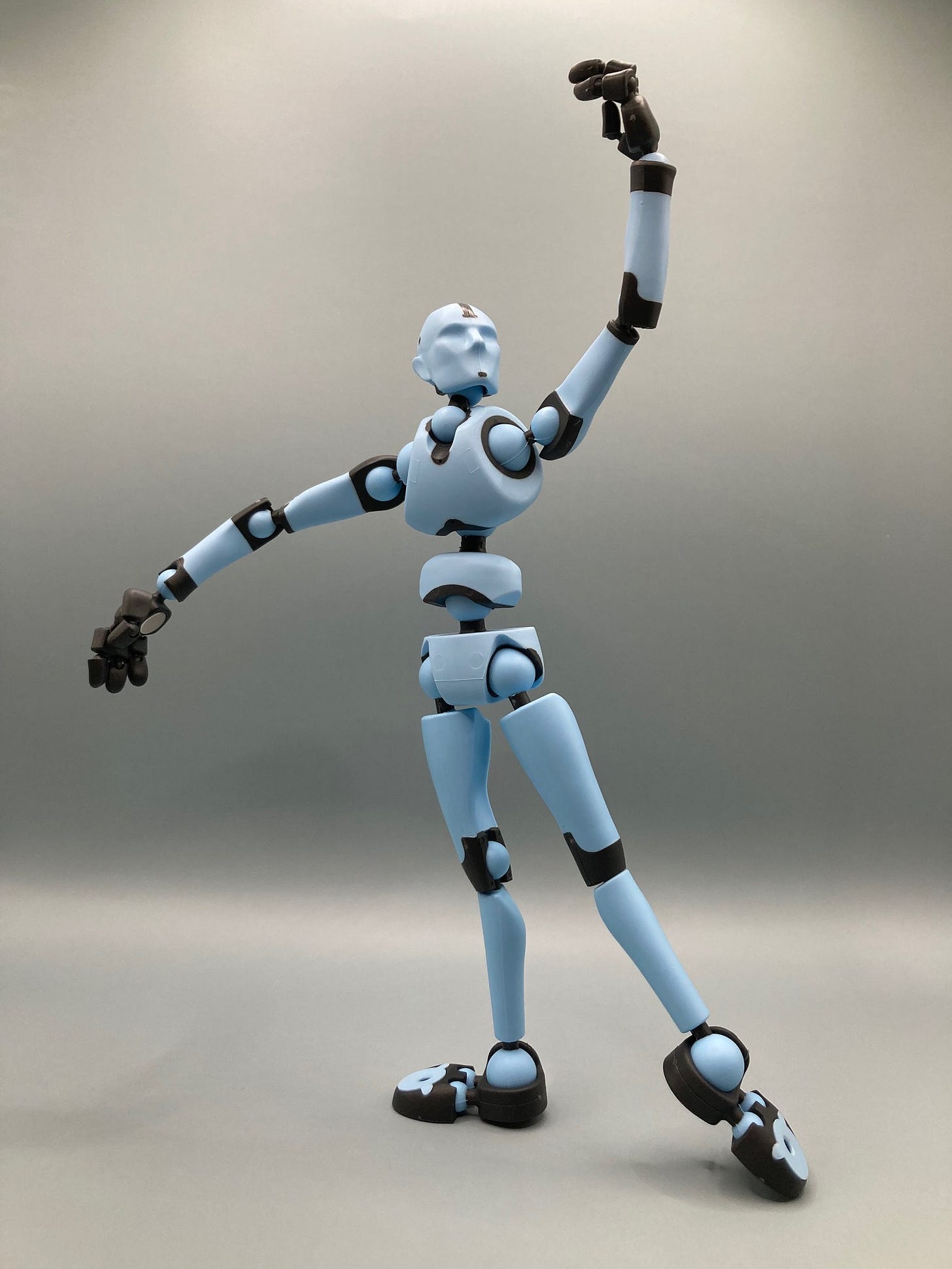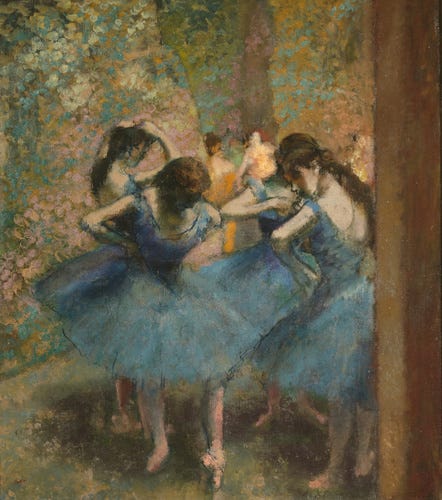French For Dancers Newsletter: Tendu
French For Dancers
Demystifying dance terminology and steps for dancers and dance-lovers!
Issue 3: Tendu
Bonjour! Welcome to French For Dancers!
Each newsletter, we will look at a dance term, its pronunciation, meaning, use. Often, different dance techniques will use varying terminology for the same step, so I will try to include those, too.
We’re waming up! After our pliés (issue 2) come the tendus!
Parlez-Vous Ballet?
(Do you speak Ballet?)
TENDU or BATTEMENT TENDU
(bat-tuh-mon ton-doo)
It’s a French For Dancers BOGO! We have two words this week, “battement” and “tendu!”
Pronunciation note: the “t” on the end of battement is silent, as it is in many French words. The “t” at the start of tendu is not silent!
Battement means either a beat or a repeated movement (like a heartbeat). In ballet terms, steps that are called battements are usually steps with a little oomph (very technical term!) to them - such as battement tendu, battement frappé, or grand battement – where the working leg comes to extension. We’ll be exploring more of these steps in future newsletters.
The word tendu means stretched or tight. The verb étendre means to stretch out or extend.
Tendus, like pliés, are a foundational movement; they build strength, flexibility and range of motion in the foot and ankle. In a tendu, the working foot begins in one of the standing positions (usually a closed one) and slides along the floor to the front, side, or back until only the tip of the toe is touching the ground and the arch of the foot is stretched. The foot must articulate through demi-pointe (half-pointe position, where the ball of the foot is on the ground) on the way out and in. It is important to keep the heel of the working leg forward in order to not sickle that foot, no matter which direction the tendu is going.
Savoir-Faire
(Know-How)
Student Tip:
While front and back tendus should open directly forward and backward, side tendus should follow the direction set by your starting position, which will be determined by your own level of turnout and flexibility. Do not try to push yourself into a 180-degree position if you’re not ready!
To keep the tendu going in a straight line, imagine that you have a tiny glitter or paint brush under your big toe and paint a straight line, rather than a circular one.
Teacher Tip
Half-tendus are a great way to work on foot articulation and strength, especially for pre-pointe dancers! From the fully extended tendu position, have students return the foot part way, enough to bring the ball of the foot to the ground. Then quickly lift the arch of the foot, slide the toes out, and regain the fully pointed tendu extension. This can be done in all directions.
À La Carte
(From the Menu)
Recommendations, reflections, and/or useful links!
My dance model Bleu recommends that you take a peek at some famous friends – the painting Danseuses Bleues (Blue Dancers) by Edgar Degas, circa 1890. Since most of us are not traveling to Paris for the Olympics this summer, the Musée D’Orsay website will have to do! (And while you’re there, have a lovely browse around the site to see what other Degas sketches and paintings you can find.) I love the familiarity of this ballet scene, with its last-minute costume and hair fixes before going on stage, and a quick check of a pointe shoe.
Their site even has a translate-to-English feature if you want to learn more about the paintings!
Merci!
(Thank you!)
Thank you for reading this newsletter! If you have friends who might enjoy this, please share the link with them!
- Peggy






